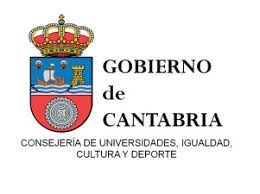“With my own eyes I saw Amadís de Gaula”. On the beginning of the second part of Don Quixote
DOI:
https://doi.org/10.55422/bbmp.191Keywords:
Quijote II 1, History and poetry, Don Quixote's madness, Humour, Portrait, Physiognomy, Construction of character, Criticism of declining HumanismAbstract
This article is a close reading of Don Quixote’s first chapter of the Second part, with particular attention to Amadís de Gaula and other chivalric heroes’ physical description made by don Quixote. This passage of the novel is a parody of the humanistic uses of physiognomy, and it shows some important thematic and narrative patterns: the confusion between history and poetry (truth and fiction), the careful depiction of hidalgos’ madness, the principal mechanisms of Cervantes’ humour, the criticism against some vacuous and pedantic disciplines. These features go beyond the first chapter and they can also be recognized in the subsequent chapters. This essay also examines the relationship between Don Quixote II,1 and the first chapter of the First part, to which Cervantes might had turned his gaze when starting the sequel.
Downloads
Publication Facts
Reviewer profiles N/A
Author statements
Indexed in
- Academic society
- Sociedad Menéndez Pelayo
- Publisher
- Sociedad Menéndez Pelayo
Global Statistics ℹ️
|
131
Views
|
91
Downloads
|
|
222
Total
|
|
References
ARIOSTO, Ludovico. (1976) Orlando furioso. Cesare Segre (Ed.). Milán. Mondadori.
ARMAS, Frederick A. de. (2011) Don Quijote among the Saracens. A Clash of Civilizations and Literary Genres. Toronto. University of Toronto Press.
CANDEL, Miguel, Susana VIOLANTE, Ignasi ROVIRÓ y Andrés GRAU. (2010) «El conocimiento enciclopédico medieval y su influencia en el Renacimiento». Humanismo y pervivencia del mundo clásico. Homenaje al profesor Antonio Prieto. José María Maestre Maestre, Joaquín Pascual Barea y Luis Charlo Brea (Eds.). Alcañiz Madrid. Instituto de Estudios Humanísticos-CSIC. IV.4. 1945-1951.
CARO BAROJA, Julio. (1988) Historia de la fisiognómica. El rostro y el carácter. Madrid. Istmo.
CAROLI, Flavio. (1998) L'Anima e il volto: ritratto e fisiognomica da Leonardo a Bacon. Milán. Electa.
CASALDUERO, Joaquín. (1970) Sentido y forma del «Quijote». Madrid. Ínsula.
CASCARDI, Anthony J. (2012) Cervantes, Literature and the Discourse of Politics. Toronto. University of Toronto Press. DOI: https://doi.org/10.3138/9781442696761
CERVANTES, Miguel de. (1987) El ingenioso hidalgo don Quijote de la Mancha. Vicente Gaos (Ed.). Madrid. Gredos. 3 vols.
CERVANTES, Miguel de. (1997) Los trabajos de Persiles y Sigismunda, Carlos Romero Muñoz (Ed.). Madrid. Cátedra.
CERVANTES, Miguel de. (2001) Novelas ejemplares. Jorge García López (Ed.). Barcelona. Crítica.
CERVANTES, Miguel de. (2010) Don Quijote de la Mancha. Alberto Blecua (Ed.). Espasa. Madrid.
CERVANTES, Miguel de. (2015) Don Quijote de la Mancha. Edición del Instituto Cervantes. Francisco Rico (Dir.). Madrid. Real Academia Española. 2 vols.
CHIAPPINI, Gaetano. (1996) «Identità e verità, etica ed ironia dell’uomo chisciottesco. Sul cap. I, II parte del Quijote». Raccontare nella Spagna del Secoli d’Oro. Florencia. Alinea. 69-87.
CLOSE, Anthony J. (2007) Cervantes y la mentalidad cómica de su tiempo. Alcalá de Henares. Centro de Estudios Cervantinos.
CORDE (Corpus diacrónico del español). Real Academia Española. http://corpus.rae.es/cordenet.html
CORREAS, Gonzalo (1954). Arte de la lengua española castellana. Emilio Alarcos Llorach (Ed.). Madrid. Revista de Filología Española.
DARNIS, Pierre. (2015) Don Quichotte de la Manche. París. Atlande.
FERNÁNDEZ, Jaime. (2008) Bibliografía del «Quijote» por unidades narrativas y materiales de la novela. Alcalá de Henares. Centro de Estudios Cervantinos.
GARCÍA, Marisa. (2006) «Agüeros, profecías y ciencias adivinatorias en la segunda parte del Quijote». El «Quijote» en Buenos Aires. Lecturas cervantinas en el cuarto centenario. Alicia Parodi, Julia D'Onofrio y Juan Diego Vila (Eds.). Buenos Aires. Universidad de Buenos Aires-Asociación de Cervantistas. 381-387.
GARCÍA LÓPEZ, Jorge. (2015) Cervantes: la figura en el tapiz. Barcelona. Pasado & Presente.
GIL FERNÁNDEZ, Luis. (1980) «Gramáticos, humanistas, dómines». El Basilisco. 9. 20–30.
GRILLI, Giuseppe. (2012) «Quijote, II, 1-3: La alternativa cervantina al libro del hidalgo». eHumanista/Cervantes. 1. 198-210.
LAPLANA, José Enrique. (1997) «Gracián y la fisiognomía». Alazet. 9. 103-124.
MARAVALL, José María. (1976) Utopía y contrautopía en el «Quijote». Santiago de Compostela. Pico Sacro.
MÁRQUEZ VILLANUEVA, Francisco. (1973) Fuentes literarias cervantinas. Madrid. Gredos.
MARTÍN JIMÉNEZ, Alfonso. (2005) La réplica cervantina al «Quijote» de Avellaneda. Madrid. Biblioteca Nueva.
MARTÍN MORÁN, José Manuel. (2009) Cervantes y el «Quijote» hacia la novela moderna. Alcalá de Henares. Centro de Estudios Cervantinos.
MARTÍNEZ MATA, Emilio. (2008) Cervantes comenta el «Quijote». Madrid. Cátedra.
MONER, Michel. (1988) Cervantès: deux thèmes majeurs (L’amour. Les Armes et les Lettres). Toulouse. Université de Toulouse-Le Mirail.
MORTARA GARAVELLI, Bice. (1988) Manual de retórica. Madrid. Cátedra.
PONTÓN, Gonzalo. (2015) «Cómo se hace una novela: la composición del Quijote». Cervantes: 2015: I, 1507-1541.
PORTA, Giovan Battista della (1971). Della fisonomia dell’uomo. Mario Cicognani (Ed.). Milán. Longanesi.
POZUELO, José María. (1993) Poética de la ficción. Madrid. Síntesis.
QUEVEDO, Francisco de. (2007) Libro de todas las cosas y otras muchas más. Antonio Azaustre Galiana (Ed.). Obras completas en prosa. Madrid. Castalia. II.1. 429-477.
RICO, Francisco. (1993) El sueño del humanismo. De Petrarca a Erasmo. Madrid. Alianza.
RICO, Francisco. (2012) Tiempos del «Quijote». Barcelona. Acantilado.
RÓDENAS DE MOYA, Domingo. (2015) «El narrador de la historia» Cervantes: 2015: I, 1564-1587.
RODRÍGUEZ CUADROS, Evangelina. (2004) «Don Quijote y sus figuras: de la imitación al Retablo de Maese Pedro». Philologia Hispalensis. 18. 2. 169-195. DOI: https://doi.org/10.12795/PH.2004.v18.i02.11
SCHAM, Michael. (2009) «Don Quijote and the Art of Laughing at Oneself». Cervantes. XXIX. 1. 31-55.
SENABRE, Ricardo. (1997) El retrato literario (Antología). Salamanca. Ediciones Colegio de España.
STAGG, Geoffrey. (1959) «Revision in Don Quixote Part I». Studies in Honour of I. González Llubera. Frank Pierce (Ed.). Oxford. 347-366.
VEGA, Lope de. (2003) El amigo por fuerza. José Enrique Laplana y Gonzalo Pontón (Eds.). Comedias (Parte IV). Lérida. Universitat Autònoma de Barcelona-Editorial Milenio. II. 923-1080.
VILLALÓN, Cristóbal de. (1997) El Scholástico. José Miguel Martínez Torrejón (Ed.). Barcelona. Crítica.
WILLIAMSON, Edwin. (1991) El «Quijote» y los libros de caballerías. Madrid. Taurus.
YNDURÁIN, Domingo. (2006) «Historia y ficción en el siglo XV». Estudios sobre Renacimiento y Barroco. Consolación Baranda, María Luisa Cerrón, Inés Fernández Ordóñez, Jesús Gómez y Ana Vian (Eds.). Madrid. Cátedra. 285-332.
Downloads
Published
How to Cite
Issue
Section
License
Copyright (c) 2022 Gonzalo Pontón

This work is licensed under a Creative Commons Attribution-NonCommercial 4.0 International License.







